Posted on March 8th, 2010 by ASEE
 Operated by the Idaho National Laboratory, the Energy for Educators Website offers excellent lessons on energy topics for all grade levels, including on wind, solar, geothermal, hydro, nuclear, and biomass energy sources.
Operated by the Idaho National Laboratory, the Energy for Educators Website offers excellent lessons on energy topics for all grade levels, including on wind, solar, geothermal, hydro, nuclear, and biomass energy sources.
Teachers will also find news about the Energy workshops, INL wind resources, real-time wind data, “energy myths,” and a write-in “ask a scientist” page.
Read More
Filed under: Web Resources | Comments Off on Website: Energy for Educators
Tags: Alternative Energy, Geothermal, Idaho National Laboratory, Lesson Plans, Nuclear Engineering, Solar Engineering, Web Resources, Website, Wind Technology
Posted on March 8th, 2010 by ASEE
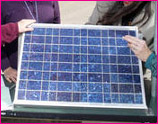 The U.S Department of Energy Energy Education and Workforce Development Website provides lesson plans, science projects, and activities, listings of student and teacher contests, information on classes, fellowships and internships, and links related to clean energy.
The U.S Department of Energy Energy Education and Workforce Development Website provides lesson plans, science projects, and activities, listings of student and teacher contests, information on classes, fellowships and internships, and links related to clean energy.
Read More
Filed under: Web Resources | Comments Off on Website: Energy Lessons Plans
Tags: Lesson Plans, U.S. Department of Energy, Web Resources, Wind Technology
Posted on March 8th, 2010 by Jaimie Schock
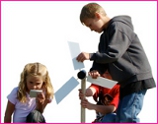 The KidWind Project website offers free resources for teaching about wind power in the K-12 classroom. KidWind offers lesson plans, introductions to key concepts, plans and guides for building model wind turbines, and links to resources around the web. KidWind regularly hosts workshops, events, and conventions, as well.
The KidWind Project website offers free resources for teaching about wind power in the K-12 classroom. KidWind offers lesson plans, introductions to key concepts, plans and guides for building model wind turbines, and links to resources around the web. KidWind regularly hosts workshops, events, and conventions, as well.
Read More
Filed under: Web Resources | Comments Off on Website: KidWind
Tags: Curriculum, Lesson Plans, Science Fair Projects, Web Resources, Wind Energy, Wind Technology, Wind Turbine, Workshops
Posted on March 8th, 2010 by ASEE
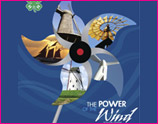 The Power of the Wind Website supplements The Power of the Wind National 4-H Curriculum, designed to help middle school students learn about wind energy and design, build, and test wind-powered devices.
The Power of the Wind Website supplements The Power of the Wind National 4-H Curriculum, designed to help middle school students learn about wind energy and design, build, and test wind-powered devices.
The Website offers videos, links to other wind energy resources, and clever 2-page activities, including building a weather vane, kite design and improvement, and an energy scavenger hunt.
Read More
Filed under: Web Resources | Comments Off on Website: 4-H-The Power of Wind
Tags: Class Activities, Web Resources, Wind Technology
Posted on March 8th, 2010 by ASEE

The NOAA Photo Library captures the work, observations, and studies carried on by the scientists, engineers, and personnel of this diverse agency — the National Oceanic and Atmospheric Agency. The 32,000 digitized images demonstrate NOAA’s scientific heritage, spanning the World’s oceans and atmosphere, and transporting viewers “from the surface of the sun to the bottom of the sea, and [from] travels through centuries of scientific thought and observations.” Teachers may find these images helpful to illustrate engineering and scientific principles.
Read More
Filed under: Web Resources | Comments Off on Website: NOAA Photo Library
Tags: Atmosphere, Images, Weather, Web Resources, Website
Posted on March 8th, 2010 by ASEE
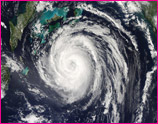 The Wind Science and Engineering Research Center at Texas Tech University, Lubbock, Texas, has a number of weather-related resources for students and for teachers, including activities to measure the wind or simulate a tornado, images from the National Oceanic and Atmospheric Administration, and links to other online sites, such as FEMA and the Weather Channel.
The Wind Science and Engineering Research Center at Texas Tech University, Lubbock, Texas, has a number of weather-related resources for students and for teachers, including activities to measure the wind or simulate a tornado, images from the National Oceanic and Atmospheric Administration, and links to other online sites, such as FEMA and the Weather Channel.
Read More
Filed under: Web Resources | Comments Off on Website: Wind and Weather Resources
Tags: Weather, Web Resources, Wind Technology
Posted on March 3rd, 2010 by ASEE
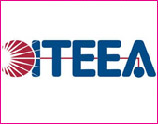
The International Technology and Engineering Educators Association — ITEEA — is a professional organization for technology, innovation, design, and engineering educators. The Association seeks to promote technological literacy by supporting the teaching of technology and promoting the professionalism of those engaged in these pursuits.
Find on the website lists of grants and awards and online resources, and the Engineering by Design program.
Read More
Filed under: Web Resources | Comments Off on Website: ITEEA, an Educators’ Association
Tags: Web Resources
Posted on March 1st, 2010 by ASEE
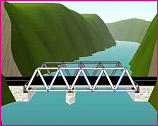 Built for the West Point Bridge Design 2010 Contest, the West Point Bridge Designer 2010 software also can be used and distributed for educational uses. This software provides tools to model, test, and optimize a steel highway bridge, based on realistic specifications, constraints, and performance criteria. It introduces students to engineering through an authentic, hands-on design experience. This software provides tools to model, test, and optimize a steel highway bridge, based on realistic specifications, constraints, and performance criteria. It introduces students to engineering through an authentic, hands-on design experience.
Built for the West Point Bridge Design 2010 Contest, the West Point Bridge Designer 2010 software also can be used and distributed for educational uses. This software provides tools to model, test, and optimize a steel highway bridge, based on realistic specifications, constraints, and performance criteria. It introduces students to engineering through an authentic, hands-on design experience. This software provides tools to model, test, and optimize a steel highway bridge, based on realistic specifications, constraints, and performance criteria. It introduces students to engineering through an authentic, hands-on design experience.
Read More
Filed under: Web Resources | Comments Off on Web Resource: Bridge Building Software
Tags: Bridge building, Bridge Design, Civil Engineering, Software, Web Resources
Posted on March 1st, 2010 by ASEE
 On the Women in Engineering page of the online Women at Work Museum, students can read the profiles of women involved in engineering and technology, from the earliest computer programmers to inventors, bridge builders, professors, entrepreneurs, and current college students. The page also carries information about engineering disciplines and earnings, as well as discussions from the Ask an Engineer — Engineer Girl! page.
On the Women in Engineering page of the online Women at Work Museum, students can read the profiles of women involved in engineering and technology, from the earliest computer programmers to inventors, bridge builders, professors, entrepreneurs, and current college students. The page also carries information about engineering disciplines and earnings, as well as discussions from the Ask an Engineer — Engineer Girl! page.
Read More
Filed under: Web Resources | Comments Off on Website: Profiles of Female Engineers
Tags: Web Resources, Website, Women in Engineering
 Operated by the Idaho National Laboratory, the Energy for Educators Website offers excellent lessons on energy topics for all grade levels, including on wind, solar, geothermal, hydro, nuclear, and biomass energy sources.
Operated by the Idaho National Laboratory, the Energy for Educators Website offers excellent lessons on energy topics for all grade levels, including on wind, solar, geothermal, hydro, nuclear, and biomass energy sources.








 The U.S Department of Energy
The U.S Department of Energy  The
The  The
The 
 The
The 
 Built for the West Point Bridge Design 2010 Contest, the West Point Bridge Designer 2010 software also can be used and distributed for educational uses. This software provides tools to model, test, and optimize a steel highway bridge, based on realistic specifications, constraints, and performance criteria. It introduces students to engineering through an authentic, hands-on design experience. This software provides tools to model, test, and optimize a steel highway bridge, based on realistic specifications, constraints, and performance criteria. It introduces students to engineering through an authentic, hands-on design experience.
Built for the West Point Bridge Design 2010 Contest, the West Point Bridge Designer 2010 software also can be used and distributed for educational uses. This software provides tools to model, test, and optimize a steel highway bridge, based on realistic specifications, constraints, and performance criteria. It introduces students to engineering through an authentic, hands-on design experience. This software provides tools to model, test, and optimize a steel highway bridge, based on realistic specifications, constraints, and performance criteria. It introduces students to engineering through an authentic, hands-on design experience.  On the Women in Engineering page of the online Women at Work Museum, students can read the profiles of women involved in engineering and technology, from the earliest computer programmers to inventors, bridge builders, professors, entrepreneurs, and current college students. The page also carries information about engineering disciplines and earnings, as well as discussions from the Ask an Engineer — Engineer Girl! page.
On the Women in Engineering page of the online Women at Work Museum, students can read the profiles of women involved in engineering and technology, from the earliest computer programmers to inventors, bridge builders, professors, entrepreneurs, and current college students. The page also carries information about engineering disciplines and earnings, as well as discussions from the Ask an Engineer — Engineer Girl! page.